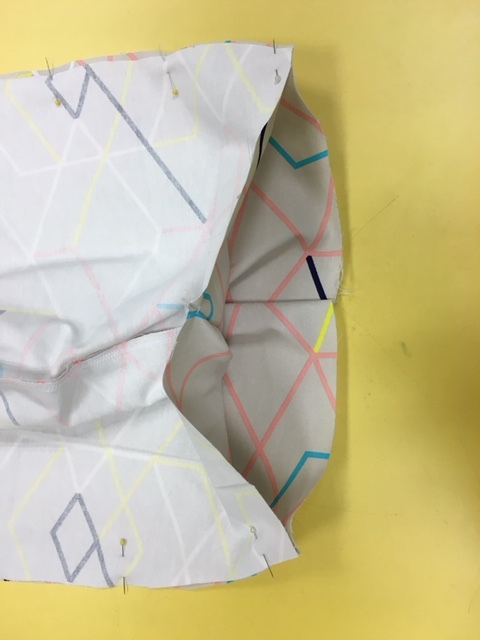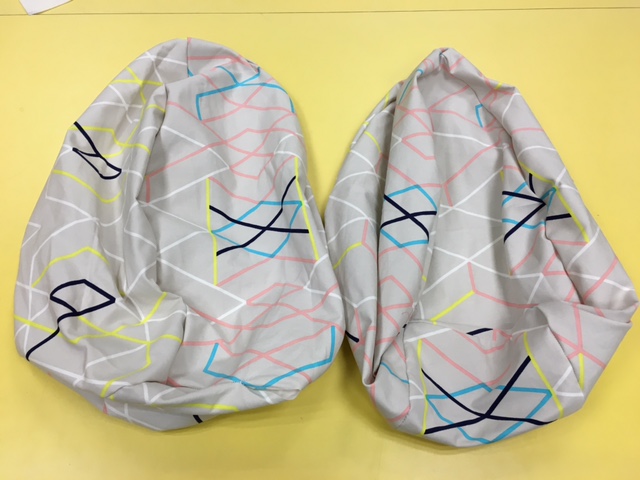Halloween Fluffy Bats - Art and Craft.
Looking for a fun, calming and mess free activity to do with your kids for halloween? Why not try our fluffy bats?
Read moreFairy design birthday invitations
Download our new fairy birthday invites here. Print in the comfort of your home and print the required amount you need, no need to be limited to a set amount. The invite is A5 in size and comes with a free "Thank you" note.
Decorating kids bedrooms- redesigning a bean bag
0r How to transform a bean bag from an artist not a seamstress…
I wanted to continue to update the kids bedroom after adding their paintings and new superhero shelves I moved onto the big red bean bag which has been repaired so many times its in danger of being more cotton that fabric. Luckily for me I was gifted some thick curtain fabric in a bold boyish pattern and thought it would be perfect for recovering the bean bag. Surely curtain fabric can withhold the onslaught that my boys are about to give it…. (right..?)
So I stared measuring my existing beanbag to create a template for the new one, when brainwave I had a great idea. Why not shrink the pattern a bit and make 2!!! The kids are always fighting over it, so why not just make 2 little boy ones…. genius!
This involved some Maths which is definitely not my forte but with the help of my calculator I managed to create a new pattern that was 2 thirds the size of the old one :) So, I got to work…
First I marked out the height, width and base of the panel on the reverse side of the fabric. I then free hand sketched the curve to link the points together (see photos below). I then cut out half of the panel and folded it down the middle to use as a stencil to create a symmetrical shape on the other side.
As you can see below by placing my original bean bag over the top I have created a panel about 2 thirds the size.
Cut out the panel, this will now be your template for the other panels to ensure they are all the same, and also to avoid a lot of unnecessary measuring. I need 4 panels per bean bag so 8 in total. If your fabric will allow, try to tessellate your panels onto the fabric to make the most of what you have (see image below). Plus this trick might leave you with left overs to make some cushions :)
Line up your panels next to each other in the order that you would like them to be stitched and pin together 2 sides. Add the pins vertically this way you can stitch over the top on the machine and you wont have to remove each one. I need my bean bags to be very durable so I decided to add 2 rows of stitching. My first row was on setting 2 on my machine and as you can see in the pics it sews a neat single dashed line of stitches.
Next I removed the pins and went over the original stitch with setting number 9, a tougher zigzag stitch. As you can see from the photos i did this for the 2 sections of the bean bag now I need to join those 2 together to create the 'bag'. Pin the remaining edges together again keeping the pins vertical and run through the machine using the 2 stitch technique shown above. This will be a lot more fiddly because you will have an excess of fabric to the side. Just remember that you are in charge of the machine!!! Not the other way round, so if a row of stitches are running off course, just STOP. Lift up the foot, reposition the fabric to where you want it to go and start again, slowly, is the key if you are not used to a machine, slow and steady wins this race ;)
The base! So, cut out a square to be stitched to the base of the bean bag, try and use a nice pattern in the fabric. Keep open about 60mm on one edge so you can turn your fabric inside out at the end. I find it best to clearly mark this on fabric or I end up getting carried away on the machine and stitch all the sides down which leads to a lot of unpicking and swear words. Again I used the same 2 stitch technique. This will be really fiddly now, I had to release and reposition my foot many times especially on the corners whilst I folded the fabric. Some corners will be very thick, so please go extra slowly so that you don't break the needle.
Using the little hole that you left, squeeze your hand through and grab the end of the beanbag from the inside. Now carefully pull all the fabric through the hole until your bean bag has the pattern side showing. (see photos above).
Next I made a little funnel using paper and tape. Roll the paper into a cone shape, stick the edge with tape and cut off the end to fit the size of your bean bag hole. Now you can start pouring in the little balls. From my experience many of these will escape and you'll be finding them for weeks to come but hopefully you'll get enough in to fill the bag. (see photos below)
Lastly...(phew nearly there) Fold the edges of your bean bag hole inwards and pin together to create a neat seam. Carefully hand stitch or run through your machine to finish.
Congratulations! you now have 2 mini bean bags ready for 2 mini bums :)
Enjoy!
Christina x
Boys bedroom decor ... Superhero revamp
POW! BANG! BOOM!!!
What a transformation and imagine my little boys faces when they saw their dreary old cabinets brought to life with all their favourite superheroes, mixed with vintage artwork. And, For those of you thinking you don’t have enough space, I can assure you that I completed these in my office (which has nearly room to swing a cat) to make sure it stayed a surprise gift.
To create something similar here’s what you’ll need:
*2 Paint Brushes
*Stencil brush or flat ended brush
*A roller (not a necessity but makes it easier)
*Print outs or wall paper design
*Blutac or similar
*Paints
*Varnish (I used polyurethane varnish, satin, clear).
*Large protective mat
*Lots of ventilation (e.g. open windows)
The cabinets I used were from ikea so free of stain or varnish and ready for painting if your cabinet has a finish on it, it would be best to rub it down first with some 80-120 grit glasspaper so that the paint adheres better.
Step 1: Painting
Prep the area, e.g. spread a large plastic sheet or bin bags over the floor and cover anything you don’t want splashed, allow the plastic to go 2 feet around the item to prevent drips and splashes on the floor; open any windows.
Apply 2 to 3 layers of thin paint over each surface. You’ll end up with a nicer finish using thin layers rather than 1 thick layer. I used the brush to paint all the awkward bits and corners and then the roller to paint the smooth flat surfaces. Allow the paint to dry fully between coats.
Top tips:
*Before using PVA or water based paints dip the brush or roller in water and squeeze out any excess. This will keep the paint at the end of your brush and it wont get sucked up to the handle.
*When you have temporarily finished wrap your brush or roller in cling film (saran wrap). This will keep the tool damp ready to pick up and use again in a few hours or the next day.
Step 2: Decorating
Apply your decoration, I bought a lovely wallpaper design with vintage comic book covers on it. I cut them out individually and stuck them in place with a mixture of 50/50 PVA and water. Wipe away any excess PVA that escapes with a damp cloth.
For the lettering I was lucky enough to print out my own stencils, however, you can free hand paint or download my JPEG here to make your own stencils. For a illustrator version send me an email and I’ll send it to you FOC.
Stencilling:
Blue-Tac (or similar) your stencils into place to keep them from moving. I also use blu-tac for the inside of the small letters rather than trying to fiddle about with small bits of stencil (see pics below). Using a stencil brush in a stippling motion, apply a small amount of paint at a time. The brush must be flat and you must dab it, not stroke it or the paint will seep under the stencil (too much paint on the brush will cause this as well). The white letters needed 2 coats and the red letters had a base coat of white and then 2 red. If like me you are adding a bright colour on top of a dark colour then apply a base coat first or mix some white into the paint this will help it cover better.
When I finished I just had to touch up some bleeds with the blue base colour paint , Allow to dry thoroughly. (I used a base coat of white under my read and some of it was showing when I removed the stencil so I went around the letters with a black permanent marker pen).
Step 3: Finishing
Choose your style of varnish e.g. Matte, Satin, Gloss (I used satin). Ensure you have lots of ventilation, this stuff stinks so I squeezed in a fan with my opened windows. Apply 2 thin coats on each surface. I applied 4 thin coats to the tops of the cabinets because my boys play rough and I know it’ll get lots of wear and tear. Again allow to dry thoroughly between coats.
I also added some little furry protective stickers to the bottom to stop the floor from getting marked.
Top Tips:
* Before using varnish dip the brush in white spirit and squeeze out any excess. This will keep the varnish at the end of your brush and it wont get sucked up to the handle.
*When you have temporarily finished wrap your brush in cling film (saran wrap). This will keep the tool damp ready to pick up and use again the next day.
*If the surface is slightly rough to touch, between coats give a light sanding with 800-1000 grit glass paper. This will leave you edge silky smooth.
Congrats!!! you’ve finished :)
Now stand back and watch your kids destroy it ;o
Christina x






























































